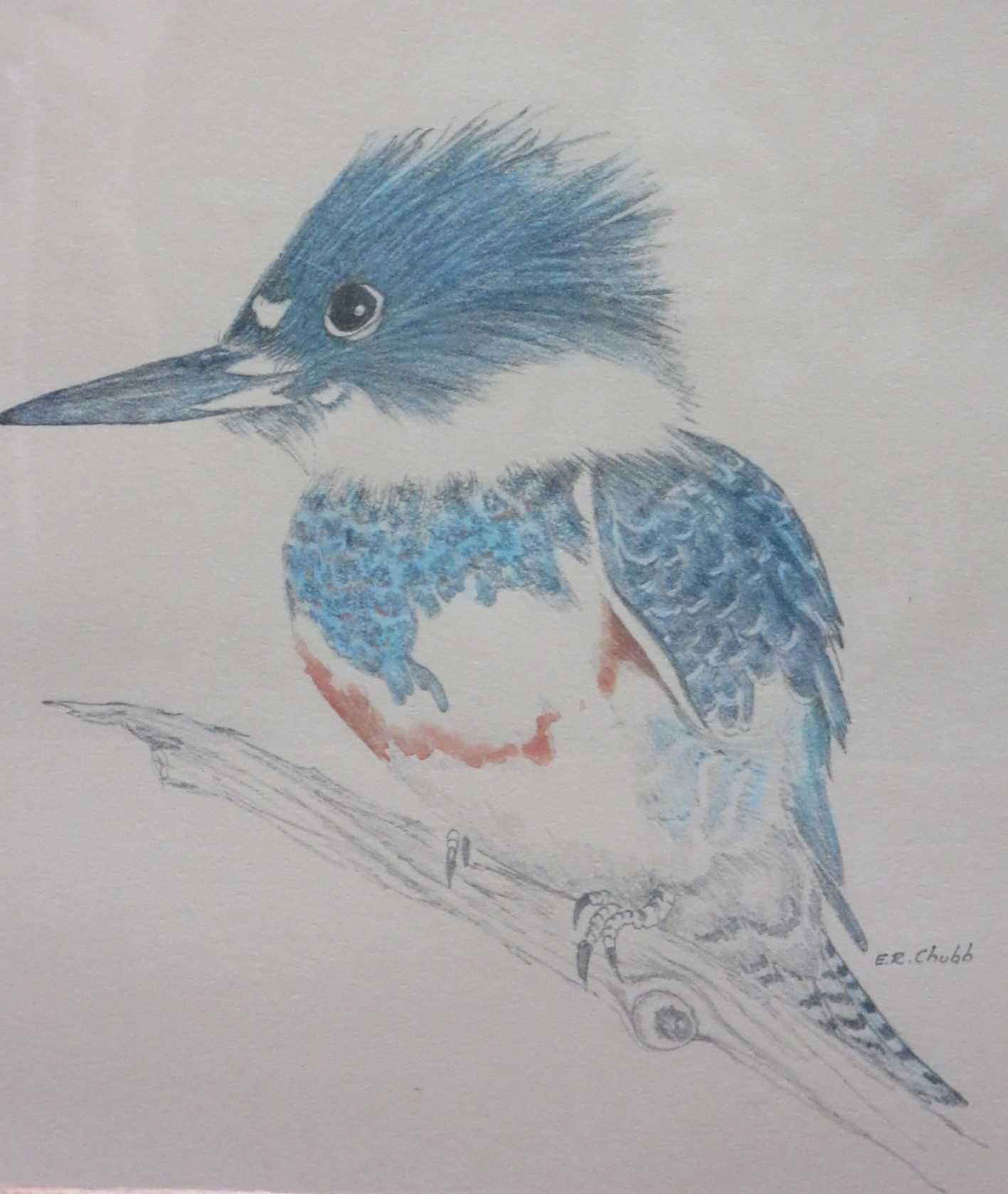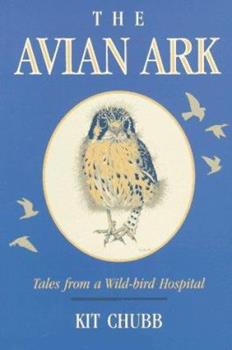My wife, Elizabeth (Lib) and I came to Kingston area cottage country in 1964. We fell in love with the wilderness back country. In 1974 we moved into the cottage full time.
The location was a log home on a remote bay of South Branch of Buck lake - due south of the boat launch on the Perth Road. Our nearest neighbour was a mile away.
Lib and I met Kit Chubb through our separate interests. Mine was a lifelong interest in wild birds. Lib's was in drawing, sketching. Kit was the founder of the Avian Ark, more formally known as the Avian Care and Research Foundation. Kit and her husband managed the hospital for wild birds from 1978 until it closed in 2006. Kit died ten years ago in February 2012 but her legacy of caring for wild birds in distress lives on in wonderful memories. This is just one.
Along our shoreline a solitary kingfisher was a frequent visitor. It fished from branches overhanging the shore. Its rattling call was unmistakable. We wondered where it lived.

Surely nearby, but not along our steep, rock cliff bordered, shoreline. Most likely its home was in a sandy bank bordering one of the upland ponds, or waterways. I had seen the odd kingfisher up there on my wanderings. I had also seen bank swallows in flight up there. I knew the two species would cohabitate at a good site.
One day we received a call from Kit Chubb. She had just received a clutch of seven kingfisher fledglings. They had been rescued from a deserted nest tunnel. It had been wrecked by road construction working along the high sandy road bank.
Kit wanted to know if I knew of any sandy hill side where she could relocate the baby kingfishers once they were ready for release. I agreed to look for a promising local site.
Soon after I was talking to our nearest neighbour, Kim Turner. I told her of my quest. She said she had seen our solitary kingfisher but knew of no nest location. She mentioned a cottage nearby that did have such a place, back on a sandy slope.

I trudged through the underbrush and found the site. A single bank swallow swooped overhead, and I thought I saw a hole that could be an entrance to a “nest tunnel.*” The site was on Buck Lake, but it backed over the hill and down to a pair of beaver ponds and a creek that led north into Buck Lake.
When I reported back to Kitt she felt the pond was a good release site - fish, food for the kingfisher babies, and overlooking the pond, a sandy hill close by they could surely find.
Six or more weeks later. I had another phone call from Kit. The baby birds had grown well. They were flying around the wire enclosure and fishing for minnows in the pond inside. A date was set for their release.
A party of six or eight gathered at the side of the pond; Kit, her husband, the Boston's, the couple who owned the home overlooking the pond. All cheered as we individually released a bird. The kingfishers all flew, one after another, into the cluster of pussy willows along the road between the two ponds. They were bunched together, unable to believe they were free.
We all left after a while. The homeowners watched the birds from the house. They phoned at dusk to say the birds had started to fly about. Several had even been fishing. By the end of the next day, the mob had begun to disperse. Individual birds kept reappearing at the pond, but by late fall they had all disappeared.
Next Spring, we did see more kingfishers than usual. It took several years before a kingfisher nest tunnel was constructed in the sandbank I had located. After several more years, kingfishers had taken over the site. The bank swallows were gone. Later still, a fox moved in. Several years later, the kingfishers were gone from both sites.
We continued to see kingfishers along our Buck Lake shore and in the back ponds and marshes. So, we can conclude that the resettlement of the kingfisher babies was probably successful.

However, the decline of bird populations is a concern. We have had no real long term increase in kingfisher numbers. The problem is likely environmental. Since we arrived at Buck Lake in 1964, Queens University Biology Station (QUBS) reports a 50% to 80% reduction in bird populations hereabouts. Ducks, Loons, Hummingbirds, Warblers, Night Hawks, Whip-poor-wills, etc. Culprits are habitat degradation in Canada, Stateside and South America destruction, and reduction of Canadian habitat due to growth and reduction of bird friendly spaces in cities and surrounding areas.
Wild bird protection is a must. So is rehabilitation of injured birds. As I close this short essay, I am no longer trudging through the underbrush as I used to, but I want to thank Kit Chubb for giving me the opportunity be involved years ago with this Kingfisher tale. A pleasant memory for sure.
By Ralph Boston
Ralph Boston has always been equally at home in boardrooms advising on how to identify and solve problems, and at university podiums teaching engineering students to do the same. Writing effectively was a big part of that. Work was balanced by recreations that kept him close to nature, sailing, fishing, hunting, and animal husbandry. In retirement Ralph has increasingly taken to telling his stories, both in writing and orally.
Kitt Chubb was a well-respected avian artist in Southeastern Ontario. She enjoyed roaming Ralph's wildlands on the shores of Buck Lake, finding subjects for her sketching. Those wildlands have been donated to the Queens University Biology Station and are now known as "the Boston Badlands". See [No regrets says Avian Ark founder Kit Chubb]
*A kingfisher excavates a tunnel as a nest, usually on a sandy cliff.
Posted in: Volume 17, Issue 2, February 2022, Nature, People, Places
Please click here if you are unable to post your comment.
